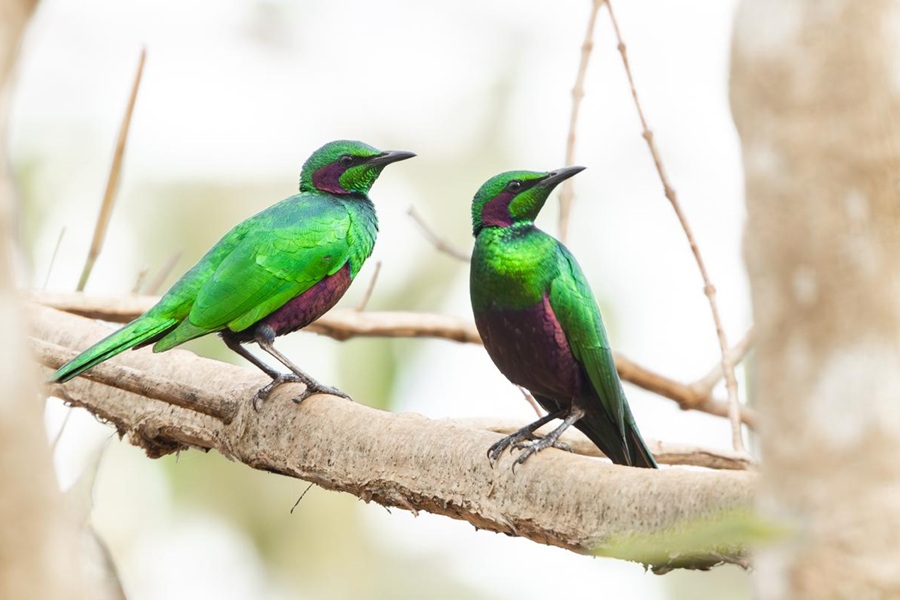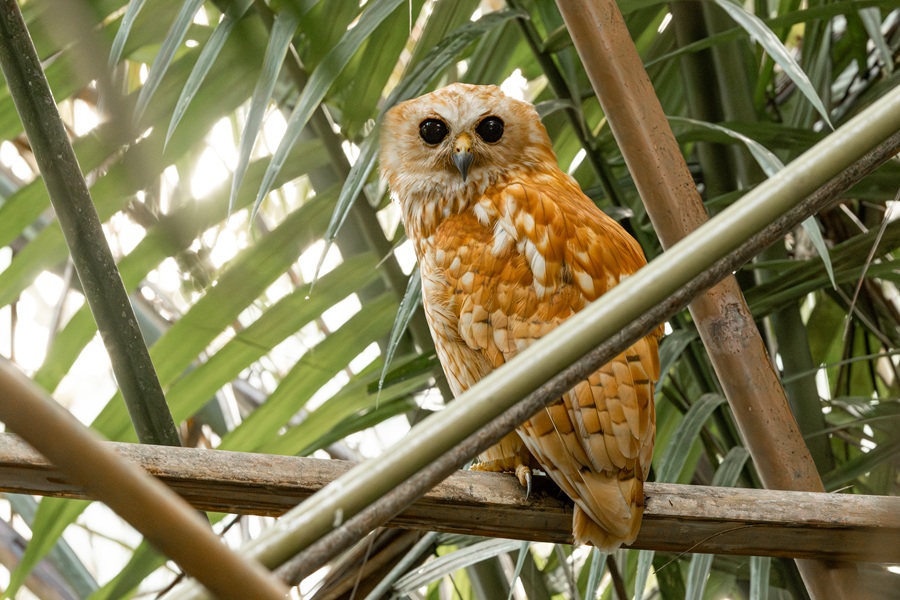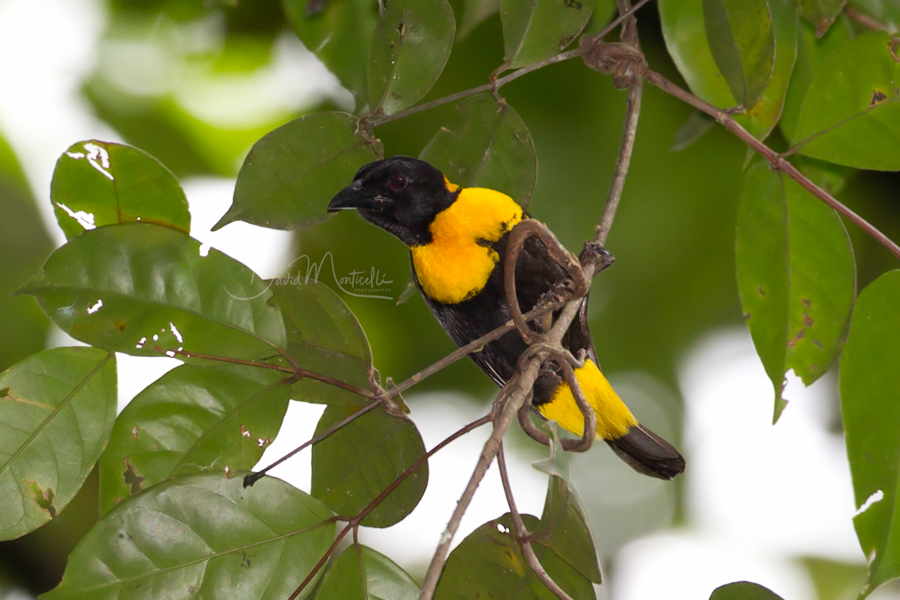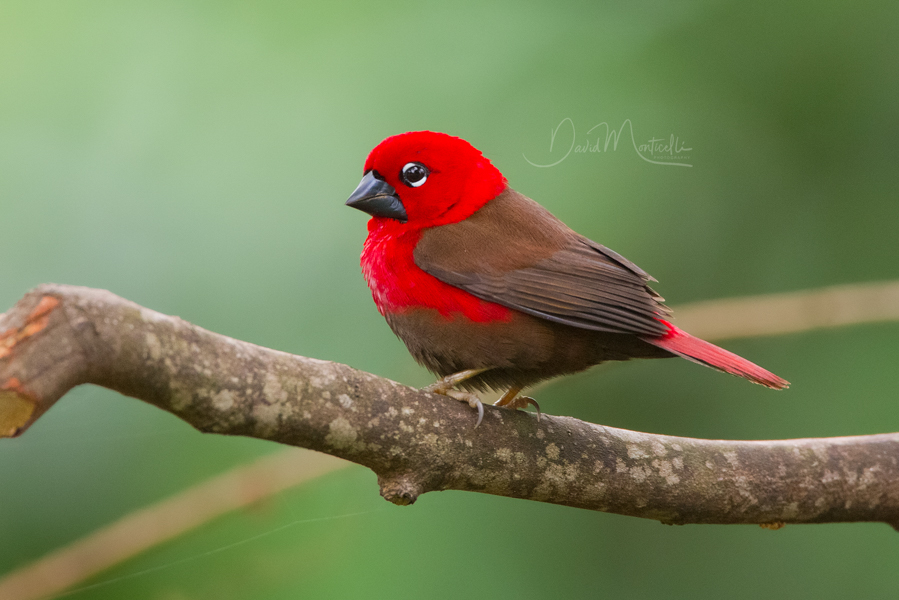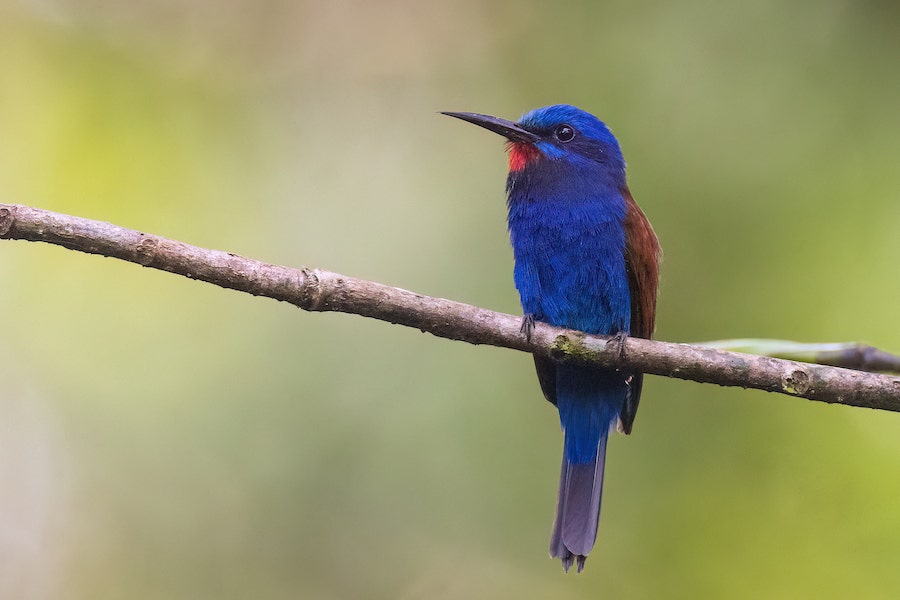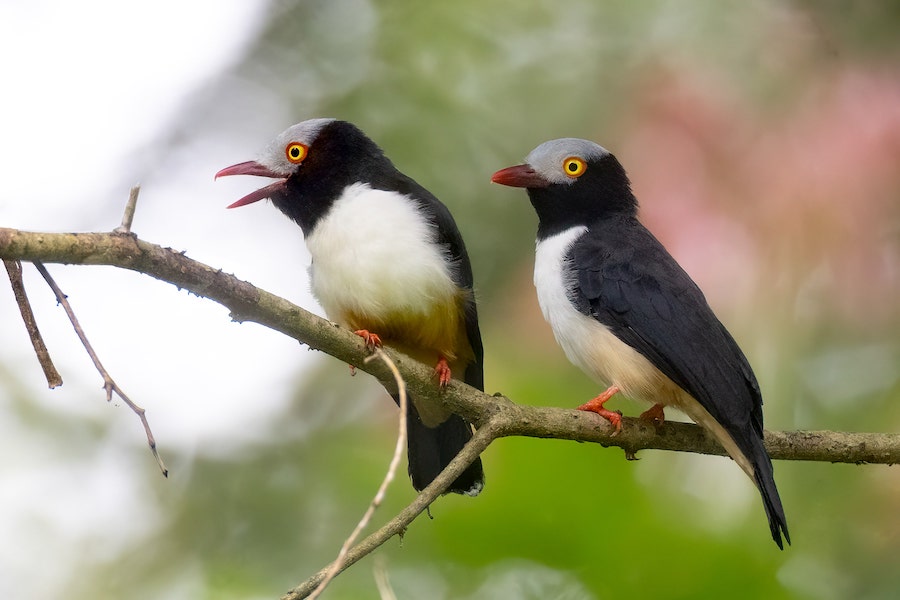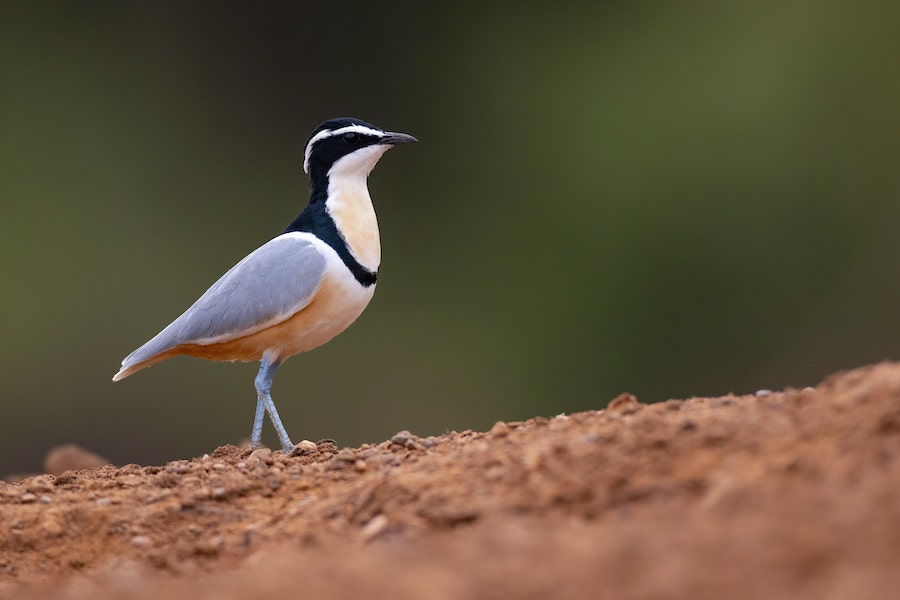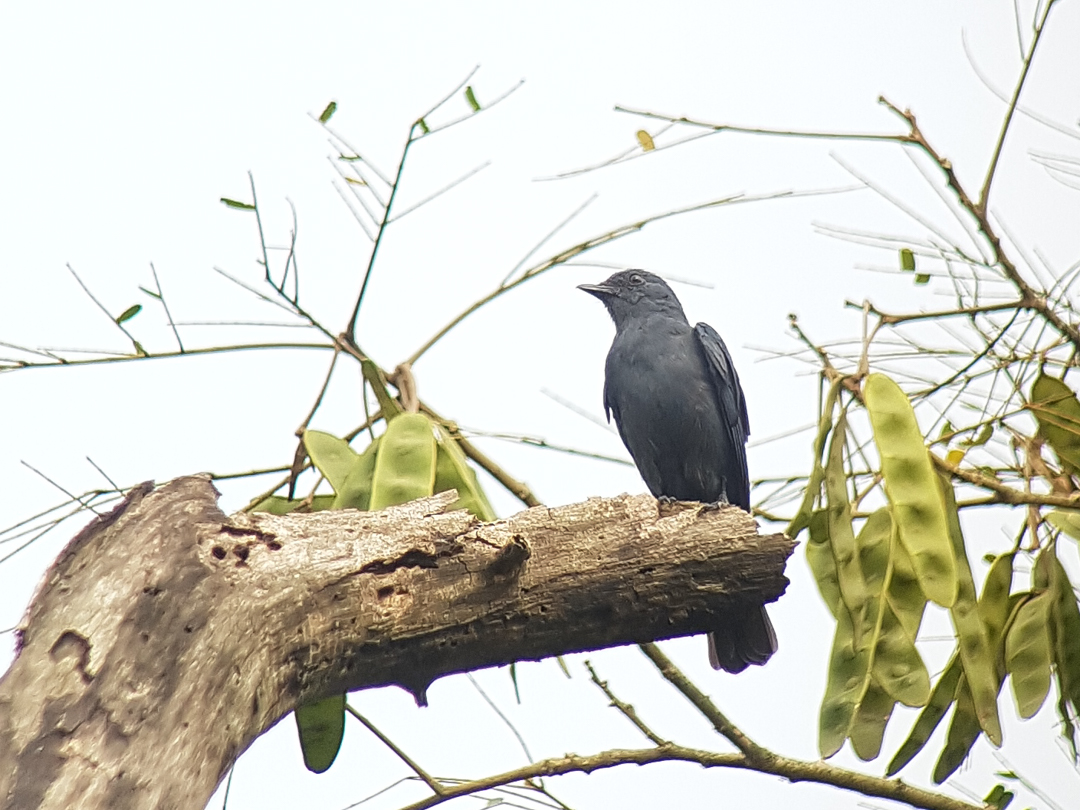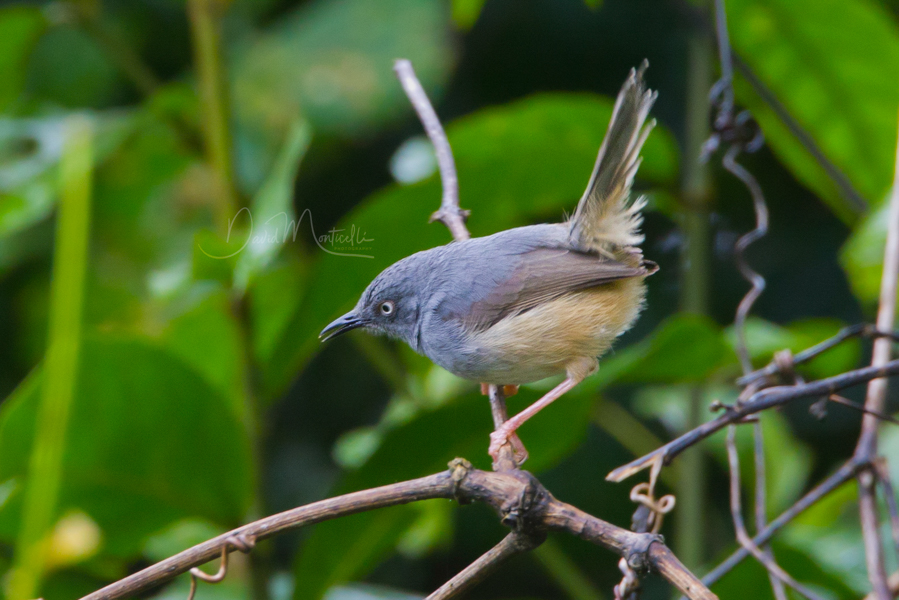Sierra Leone & Liberia
While many people may not immediately think of these two countries as top birding destinations, they are not only completely safe with some great lodges and superb forest, but offer more Upper Guinea endemics than Ghana! Birding in Liberia includes Mount Nimba, with Black-headed Rufous Warbler, Sierra Leone Prinia, Gola Malimbe, and Nimba Flycatcher as main targets. After crossing into Sierra Leone (a very straightforward process these days), birding at Tiwai Island and Gola North includes Rufous Fishing Owl, White-necked Picathartes, Nkulengu Rail, Turati's Boubou, Emerald Starling, Dybowski's Twinspot, and many more. We saw no less than seven West African Pitta and even a Pygmy Hippopotamus on our 2025 tour!
Next Dates
10 January - 24 January 2026 (15 days)
Leaders:
Chris Venetz
Group Size Limit:
6
Single Room Supplement: $
500 USD
Deposit: $
750 USD
Price: $
6900 USD
Add a Title
Leaders:
Chris Venetz
Group Size Limit:
Add a Title
Single Room Supplement: $
TBD
Deposit: $
TBD
Price: $
TBD
Add a Title
23 January - 6 February 2027 (15 days)
Leaders:
Joshua Bergmark
Group Size Limit:
6
Single Room Supplement: $
500 USD
Deposit: $
750 USD
Price: $
6900 USD
Add a Title
Leaders:
Joshua Bergmark
Group Size Limit:
Add a Title
Single Room Supplement: $
TBD
Deposit: $
TBD
Price: $
TBD
Add a Title
Pricing reflects accommodation at excellent lodges whilst in Liberia, and a particularly small group size limit which we believe is essential for maximising success with target birds in difficult West African forest! We will also be using one of the top local bird guides in West Africa.
Our ground agent will be arranging visas on arrival to Liberia for all participants, so an embassy visit and complicated application are not required. The Sierra Leone visa is a simple online form that can be completed close to the date of departure.
Accommodation:
Quite fabulous and comfortable lodges during our time in Liberia. More basic national park accommodation in Sierra Leone with simple rooms and no hot water (but located in the heart of the forest).
Walking difficulty:
Easy to moderate trail-based birding, which is mostly flat but involves covering five or more kilometres on foot each day.
Tour cost includes:
All accommodation, main meals, drinking water, internal flights (as stated in itinerary), overland transport, tips to local drivers and guides, travel permits, entrance fees, and guide fees.
Tour cost excludes:
Flights before and after the tour start/end, visa, travel insurance, tips to tour leaders, laundry, drinks, and other items of a personal nature.
Day 1: The tour starts this evening with arrivals at Roberts International Airport (ROB) in Monrovia, capital of Liberia. Night in Monrovia.
Day 2: We will leave early this morning and make a first stop in some farmland not far from the city. We could well encounter our first Crimson Seedcracker here, along with our first chances for specialties like “Grey-hooded” Capuchin Babbler, Red-cheeked Wattle-eye, Fiery-breasted Bushshrike, or perhaps even Congo Serpent Eagle. Then we will drive all the way to the exceptional UNESCO World Heritage listed Mount Nimba Strict Nature Reserve. There will be some stops along the way to stretch our legs, probably seeing Preuss's Swallows at a colony and perhaps already some forest birds. We will spend the next four nights in a nice hotel to make the best of this fantastic yet under-visited site!
Day 3-4-5: Three full days in the Mount Nimba area, mostly birding at different elevations on the mountain itself. Four particularly rare and range-restricted species will be our main focus here, namely Gola Malimbe, Sierra Leone Prinia, Nimba Flycatcher and the stunning Black-headed Rufous Warbler. Past mining activities have made the summit accessible, and here we will be looking for the Endangered Sierra Leone Prinia, as well as “Black-capped” Grey-winged Robin Chat and Western Square-tailed Drongo, but also many more widespread species like Ahanta Spurfowl, Western Bronze-naped Pigeon, Guinea Turaco, Yellow-billed Turaco, Black-throated Coucal, White-spotted Flufftail, Black Dwarf Hornbill, Black-headed Paradise Flycatcher, Red-tailed Leaflove, Ussher’s Flycatcher, White-tailed Alethe, and more.
Lower down, we will be on the lookout for the rarely seen Nimba Flycatcher, Rufous-winged Illadopsis, the most-wanted Black-headed Rufous Warbler, Sharpe’s Apalis, Kemp’s Longbill, and Buff-throated Sunbird, but also the localised Blue-moustached Bee-eater, Forest Woodhoopoe, Little Green Woodpecker, Willcock’s Honeyguide, Fiery-breasted Bushshrike, Finsch’s Rufous Thrush, West African Wattle-eye, Grey-headed Bristlebill and more chances for the stunning Crimson Seedcracker.
We will also visit a lowland Community Forest where we stand excellent chances of finding the near-mythical Gola Malimbe, plus Olive Long-tailed Cuckoo, the glorious "Western" Yellow-bellied Wattle-eye, Rufous-sided Broadbill, Red-billed Helmetshrike, Red-fronted Antpecker, Lowland Sooty Boubou, Western Bearded and Yellow-bearded Greenbul, and many more. There are even chances for some rarer species like Grey Ground Thrush, but finding one of these will require a lot of luck! Nights near Mount Nimba.
Day 6: After breakfast and some final birding, we will start the long journey towards Robertsport, near the Sierra Leone border, where we will stay for one night. Birding in the savannas around Robertsport could bring us Orange-breasted Waxbill, Vieillot's Barbet, Orange Weaver, Carmelite and Green-headed Sunbirds, and perhaps a surprise or two!
Day 7: After breakfast and some more birding, we will smoothly cross the Sierra Leone border and make our way to Tiwai Island for a three night stay.
Day 8-9: Two full days birding around Tiwai Island Wildlife Sanctuary, exploring the Moa River with canoes and enjoying the surrounding pristine lowland forests. We will be looking for Rufous Fishing Owl and "Western" African Pitta (both relatively common at this site), plus White-crested Tiger Heron, Nkulengu Rail, Timneh Parrot, Brown Nightjar, Yellow-casqued Hornbill, Brown-cheeked Hornbills, and perhaps a first chance for Grey-throated Rail, just to name some of the most-wanted specialties. Other birds might include Western Crested Guineafowl, Hartlaub’s Duck, African Finfoot, Rock Pratincole, Egyptian Plover, the ultimate Western Long-tailed Hornbill, Western Dwarf Hornbill, Yellow-footed Honeyguide, Spotted Honeyguide, Yellow-throated Cuckoo, White-browed Forest Flycatcher, and Yellow-mantled Weaver. White-breasted Guineafowl are sometimes seen on Tiwai, but this rare bird is far from guaranteed! Tiwai Island is also a great place for mammals, with Chimpanzee, Diana Monkey, Upper Guinea Red Colobus, Demidoff's Galago and the ultra-rare Pygmy Hippopotamus all recorded! This latter mega rarity was actually seen on our 2025 tour after some dedicated scanning with thermal scopes, so we will cross our fingers for more success. Nights on Tiwai Island.
Day 10: Today, we will drive to the Gola Rainforest Park for a three-night stay.
Day 11-12: We will have two full days to make the most of Gola. Lowland West African rainforest offers some of the toughest birding on Earth, so we will expect to work hard while finding the specialties! A vast array of birds are possible, including the poorly-known Grey-throated Rail (of which we saw three individuals here in 2025!), Latham’s Francolin, Afep Pigeon, Congo Serpent Eagle, Long-tailed Hawk, Lyre-tailed Honeyguide, Fire-bellied Woodpecker, Puvel’s Illadopsis, the scarce “Western” Lagden’s Bushshrike, Dusky Crested Flycatcher, Yellow-bearded Greenbul, Green-tailed Bristlebill, and Copper-tailed Starling, among many commoner species. Of course, we will also visit a White-necked Picathartes roosting cave on one evening, this regional specialty certainly one of the most incredible birds in the world! No long walks or camping required at this site, since we should have already seen Gola Malimbe in Liberia! Nights at Gola Rainforest Park.
Day 13: Today, we drive west to Makeni for a two-night stay. Birding a bit on the way might well produce Forbes’s Plover, the localised Black-backed Cisticola, maybe Dwarf Bittern and African Crake, or even the rare Dybowski’s Twinspot. Nights at Makeni.
Day 14: We will have a full day birding the open country surrounding Bumbuna, a pleasant relief after all that difficult forest birding of previous days! Some stunning specialties occur in this region, and we’ll mostly be looking for the mega Emerald Starling, along with Turati’s Boubou, West African Swallow, Yellow-winged Pytilia (the host of Togo Paradise Wydah, which also occurs in the area), plus Cameroon Indigobird, and maybe Jambandu Indigobird. Many more widespread savannah species here include Stone Partridge, Grasshopper Buzzard, Senegal Eremomela, Cabanis’s Bunting, Gosling's Bunting, and Zebra Waxbill. Night at Bumbuna.
Day 15: After some final birding around Makeni with more chances for Dybowski's Twinspot and Turati's Boubou, we will drive to Freetown International Airport (FNA), where our exciting tour ends late this afternoon.

